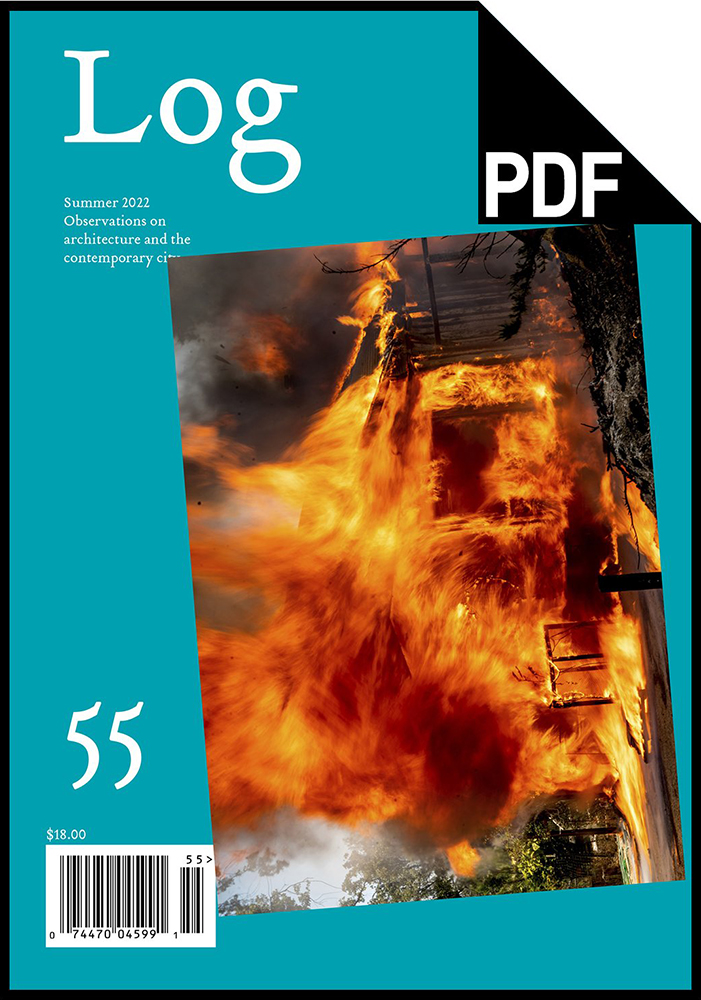From a bridge to blockchain, Amazonian urbanism to artificial intelligence, Log 55 recognizes the vast concerns of architecture today. This 176-page open issue, which includes a 16-page color insert, compiles essays, building and exhibition reviews, and remarks by 25 architects, theorists, and artists from around the world. In Berlin, Tim Altenhof critiques the newly rebuilt Humboldt Forum; in Los Angeles, Victor J. Jones reviews Michael Maltzan’s Ribbon of Light Viaduct; in New York, Cynthia Davidson visits the late Virgil Abloh’s “social sculpture,” and Thomas de Monchaux views “Anthony Ames Fifty Paintings”; in Quito, Ana María Durán Calisto and Sanford Kwinter draw inspiration from Indigenous territorial intelligence; in Rotterdam, Christophe Van Gerrewey reflects on MVRDV’s Boijmans Depot; in Taipei, Kwang-Yu King compares two new cultural venues by OMA and RUR; and in Tokyo, Jan Vranoský pens a postmortem for Kisho Kurokawa’s Nakagin Capsule Tower. Matthew Allen looks to computer science for a way out of the theory-practice divide; Simone Brott considers the ways NFTs will change architectural practice; Karel Klein draws parallels between memory and AI; and Marija Marič warns against digitized real estate fractions.
In addition, a special section guest edited by Francesco Marullo is devoted to Notes on the Desert. The section, which raises issues of climate change and the extraction economy, includes essays by architect Nathan Friedman on the US-Mexico border, artist Kim Stringfellow on jackrabbit homesteads, feminist scholar Traci Brynne Voyles on the 49ers, and architect Lydia Xynogala speaking for a desert toad; photo essays by the Center for Land Use Interpretation on nuclear tombs and by photographer Susan Lipper on desert utopia; as well as an interview with photographer Richard Misrach on his Cantos series.
About Log Journal
Founded in 2003, Log is an independent journal on architecture and the contemporary city that presents criticism and commentary in a literary format designed to resist the seductive power of the image in media while identifying and elaborating the central concerns of architectural thinking and production today. A carefully crafted compendium of essays, interviews, and brief “observations,” Log provides an ongoing international platform for the exchange of ideas, both bearing on and emanating from architecture and the city, among a curious audience of readers, including architects, designers, students, scholars, and artists. Published three times a year, general “open” issues are punctuated by occasional thematic issues on prescient topics.
All issues of Log released before 2020, including sold-out issues, are available through Jstor.
Click the image below to order Log 55.

